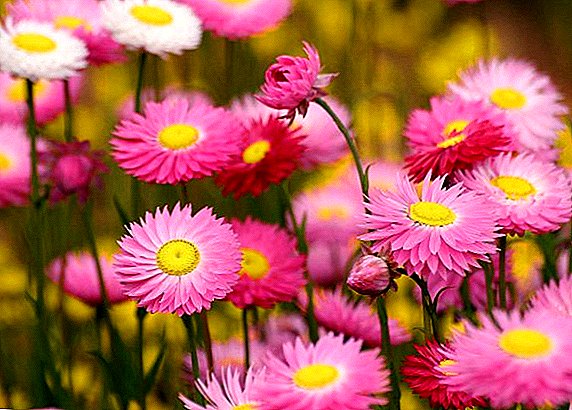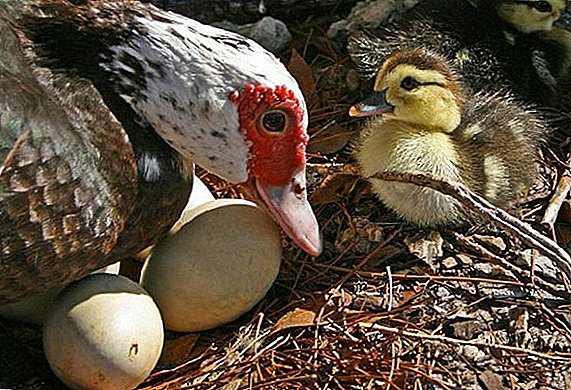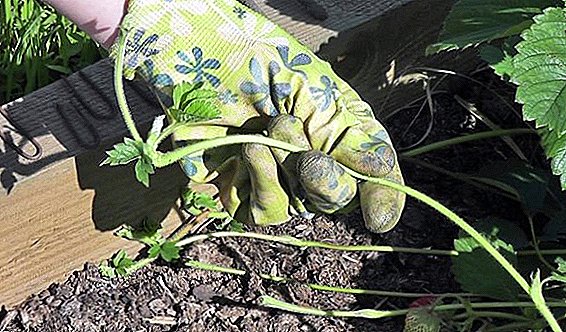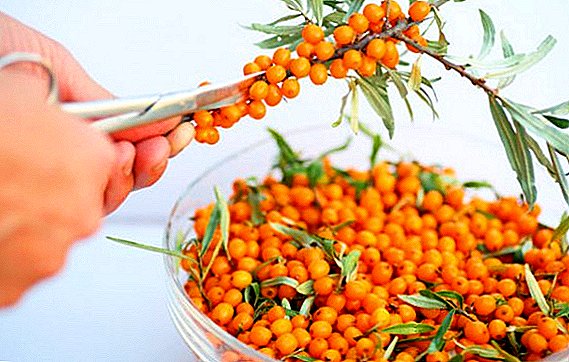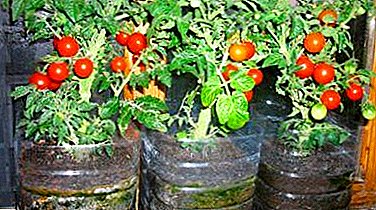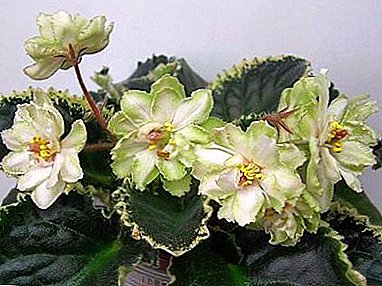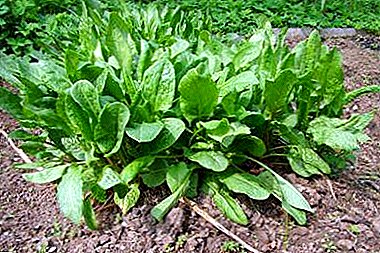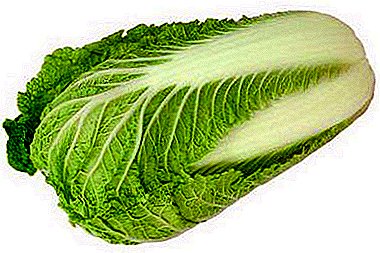 Florists who grow croton may face the problem of falling leaves.
Florists who grow croton may face the problem of falling leaves.
The article considers what can cause such a problem, its methods of treatment and prevention, as well as some of the subtleties of growing the specified plant.
Why do Croton dry and fall leaves and what to do
Croton (Codiaeum) grows in tropical forests. At home, he is demanding care because he needs an appropriate microclimate. Below we consider the main reasons that lead to the plant dropping leaves.
Wrong watering
One of the reasons that lead to the fact that the leaf plates are codable yellow and fall off may be excessive or insufficient water for irrigation. In these circumstances, in order to save the plant, it is necessary to control the soil in the flower pot to be moderately moist.
Did you know? From croton seeds make oil, which is used for the manufacture of cosmetics.Watering should be done with warm settled water. In the summer period, the interval between watering should be from 2 to 3 days, in the winter period - from 5 to 6 days. It is also necessary to regularly spraying the leaves of the plant.
 Every two weeks, the coding needs to sprinkle with water at room temperature for several days. To avoid washing out the ground during this procedure, the pot should be covered with a film.
Every two weeks, the coding needs to sprinkle with water at room temperature for several days. To avoid washing out the ground during this procedure, the pot should be covered with a film.Read more about caring for the Croton.
Violation of conditions of detention
The problem may lie in the non-observance of the necessary conditions of detention for codiam, such as improper temperature conditions and dry air in the house.
The temperature in the house above + 24 ° C can cause discomfort in the plant, low - can be fraught with the suspension of plant life processes and the cessation of its growth. As a result, the leaves will dry out on the tips and fall off.
Important! For Croton, the optimum temperature in the room is + 20 ... + 22 ° С. At temperatures below + 14 ° C, the plant is on the verge of death.Dry indoor air is a common problem with the onset of the heating season, as a result of which the codiaum dries and leaves fall. You can help the plant by resorting to such measures:
- Place a flower pot on a pallet with wet peat, moss or expanded clay and constantly add water to it. As a result of evaporation of water, a favorable microclimate will be created for the codiaum;
- wipe the leaves with a damp sponge. This will well moisturize the plant and the air around it, as well as help to clean the leaf plates from the accumulation of dust;
- use indoor humidifiers and air purifiers.

Incorrect location
Codium grows poorly if the container with it is near window glass or near heating devices. Temperature drops adversely affect the plant, as a result of which it can lose its leaves. In this case, you need to immediately rearrange the container with a flower on a wide window sill on the east or west side of the house.
You also need to make sure that the illumination of the Croton is scattered, and protect the flower from drafts and direct rays of the sun.
Important! If the plant has been burned, it’s perfectly realistic to save it. - it will be enough to immediately rearrange it in partial shade.
Lack of nutrients
Dried and fallen leaves of codiaum can be observed due to insufficient nutrients in the soil. In this case, you can save the flower, using top dressing or transplanting into fresh soil.
To avoid this problem, it is necessary to fertilize the soil with complex mineral supplements. From the beginning of April to the end of November, the codiaeum should be fertilized 2 times a month, and from the beginning of December until the end of March - once a month.  Before applying the soil, the soil should be well moistened, and fertilizers should be dissolved in water according to the recommendations in the instructions.
Before applying the soil, the soil should be well moistened, and fertilizers should be dissolved in water according to the recommendations in the instructions.
Get acquainted with the peculiarities of croton breeding at home.
Diseases and pests
The reason that the codiaeum has thrown off the leaves may lie in the diseases and the pests that hit it.
Among the diseases of Croton are the following:
- Anthracnose. Characterized by the presence of ash-gray or reddish spots on the leaf plates, after which the leaves fall. Affected plants must be isolated and sprayed with Cumulus, Euparin or Fundazol.
- Root rot. The first sign of this disease is paleness and yellowing of leaf plates. The roots become soft and rot, and the leaves fall. This disease can often occur with low acidity of the soil. Croton diseased must be watered at the root with Fitosporin-M and Alirin-B. Watering plants should be rare, but abundant.
Important! Croton sap is poisonous, therefore, when caring for the plant, you need to use gloves.
Croton pests:
- Spider mite This is a small red spider. It can be found on the lower side of the leaf plates, which it covers with thin spider webs. To get rid of it, it is necessary to wash the leaves with a weak extract of tobacco and soap, make the pollination in fresh air with ground sulfur or process it with ready-made insecticides.

- Shchitovka. Insect size 5 mm with a shield of wax, which covered their body. Young shchitovki barely noticeable, but multiply rapidly, covering the stems and leaves with dark spots. You can save the plant by spraying with tobacco-soap solution with the addition of a small amount of kerosene. Adult parasites need to be removed with a wet swab.
Useful guidelines for croton cultivation
In order for a codiaeum to grow healthy, it is necessary to observe some conditions:
- the right pot. The growth of a flower is directly related to the state of its root system, so the pot should be chosen with special attention. It should be wide and not very deep. If you take a too wide pot, it will accumulate at the roots of water for irrigation, which will cause the root system to rot. You need to take a steady and practical pot. It is better not to use clay pot - it is heavy and can create certain inconveniences for the codiaum. The best option for codiame is a plastic pot;
- transfer. For young plants, this procedure should be carried out annually, for more adults it is permissible to do it in a year. The optimal time of year for transplanting is the beginning of spring. Croton needs to be transplanted into fertile soil, which includes charcoal, river sand, leaf and sod land. The size of the pot during transplanting should be several centimeters larger than the previous one;

- nip and trim. To make Croton look neat, pinching is done on young plants and pruned on adults. The first pinching is done after the codeie reaches a height of 15 cm, the subsequent pinching is done every time the stems grow by 20 cm. When cutting an adult codeie, the cuts are treated with charcoal;
- bloom. Croton flowers do not represent decorative value, but flowering takes a large number of forces from the bush. If there is no need to collect seeds, flower buds or flower stalks should be removed immediately after their formation.
Did you know? Croton used in medicine - it cures coughs, colds and inflammations of the digestive tract.
Preventive measures
The main preventive measure to avoid the problem of fallen leaves in Croton is to follow the rules of care for it, the main points of which are:
- suitable indoor humidity;
- warm place with good lighting;
- isolation from the direct rays of the sun;
- proper watering, in which the soil is always wet;
- isolation from drafts;
- timely feeding;
- avoid sudden changes in temperature;
- regular inspection for diseases and pests.
 When dropping leaves of a croton, the first thing to do is to identify the exact cause of this problem in order to take the right actions to eliminate it. Knowing how to properly care for this plant and observing preventive measures, you will be able to grow a healthy flower that will delight with its beauty.
When dropping leaves of a croton, the first thing to do is to identify the exact cause of this problem in order to take the right actions to eliminate it. Knowing how to properly care for this plant and observing preventive measures, you will be able to grow a healthy flower that will delight with its beauty.



